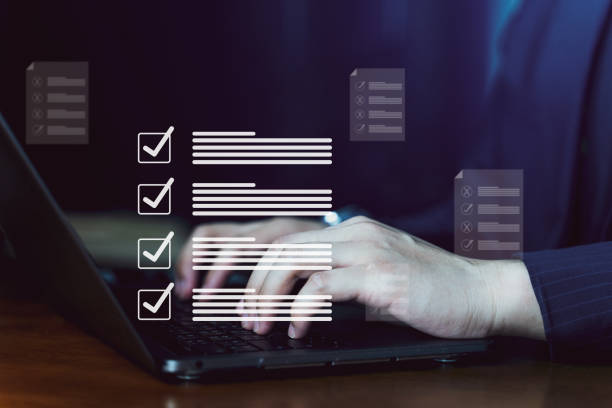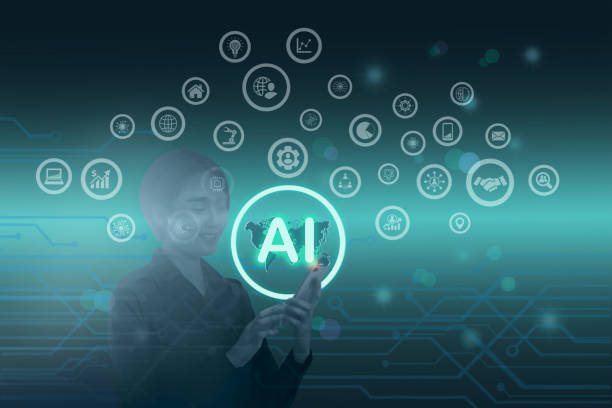Introduction to On-Page SEO and Its Importance

In today’s digital world, your website’s visibility is crucial, and this is where #On-page SEO# or In-page Optimization plays a key role.
On-page SEO refers to a set of actions performed within your website to improve its ranking in search engine results.
These actions include optimizing content, HTML tags, site structure, and technical factors, all of which affect #search engine understanding# of your page and #user experience#.
Unlike off-page SEO, which focuses on link-building from other websites, on-page SEO is entirely within your control, allowing for greater maneuverability to improve your site’s status.
The importance of on-page SEO stems from its direct relation to the quality and relevance of your page to a specific search query.
If search engines cannot properly understand your content or deem it relevant to users’ searches, even the best content will not reach its audience.
This aspect of SEO is fundamental to any successful SEO strategy, and without it, off-page SEO efforts will also be fruitless.
A deep understanding of on-page SEO helps you make your site more appealing to Google’s algorithms while providing an unparalleled user experience.
This not only leads to increased organic traffic but also improves conversion rates and ultimately helps your business grow.
A strong on-page SEO strategy is the cornerstone of your online success and allows you to outperform your competitors.
Is your current e-commerce website design not generating the expected sales for you?
RasaWeb is specialized in professional e-commerce website design!
✅ An attractive and user-friendly site aimed at increasing sales
✅ High speed and security for an ideal shopping experience⚡ Get a free consultation for online store design with RasaWeb!
Keyword Research for On-Page SEO

Keyword research is one of the first and most important steps in effectively implementing on-page SEO.
Choosing the right keywords will determine the overall direction of your content and page optimization structure.
This process involves finding words that your target audience types into search engines to access the products, services, or information you provide.
At this stage, the goal is to identify not only popular keywords but also keywords with appropriate #Search Intent# that align with your content.
Using tools like Google Keyword Planner, Ahrefs, Semrush, or even Google Suggest can help you discover relevant keywords and understand their search volume and competition level.
After identifying keywords, you should properly incorporate them into your content.
This does not mean stuffing your content with keywords (Keyword Stuffing), but rather naturally and organically placing them in the text, headings, meta descriptions, and other page elements.
Focusing on long-tail keywords, which are usually more targeted and less competitive, can help you attract higher-quality traffic.
For instance, instead of solely focusing on “SEO”, you can use the long-tail keyword “how to improve blog on-page SEO”.
Understanding user needs and questions through keywords allows you to create content that precisely addresses what they are looking for, and this, in turn, helps strengthen your site’s ranking in search results.
Content Optimization for Search Engines
![]()
Content is king; this statement holds entirely true in the world of SEO, especially in the field of on-page SEO.
Content optimization goes beyond just placing keywords and involves ensuring its quality, relevance, and value to the user.
Optimized content is not only understandable to search engines but also meets user needs.
To achieve this, your content must be comprehensive, accurate, and readable.
Using an appropriate structure, including H1, H2, H3 headings, etc., short paragraphs, and bullet points, helps improve readability and user experience.
Additionally, primary keywords should be naturally used in headings, the first paragraph, and throughout the text.
Furthermore, content freshness and being up-to-date are highly important.
Search engines prefer newer content, so regularly updating old articles and pages can help maintain and improve your ranking.
Using relevant and high-quality images and videos not only makes your content more appealing but can also lead to an increase in user dwell time on your site.
Your content should answer user questions and provide valuable information.
If your content is useful to the user, it will have a higher chance of being shared and attracting natural links (which also helps with off-page SEO).
Ultimately, focusing on specialized and in-depth content in your field of work increases your website’s credibility in the eyes of search engines and users.
This approach helps you become recognized as an authority in your industry, thereby solidifying your position in search results.
| Content Element | Importance in On-page SEO | Optimization Tips |
|---|---|---|
| Title (H1) | The most important page heading, indicating the main topic | Should include the primary keyword, be attractive, and short. |
| Subheadings (H2-H6) | Organizing content, improving readability | Should include secondary keywords, have a logical structure. |
| Main Text | Providing valuable and relevant information | Natural use of keywords, short paragraphs, clear sentences. |
| Images and Videos | Increasing appeal and user engagement | Optimizing size, using descriptive Alt Text including keywords. |
| Keywords | Helping search engines understand the topic | Natural usage in text, headings, and meta descriptions. |
| Readability | Better user experience and reduced bounce rate | Using simple sentences, bullet points, adequate white space. |
Optimizing HTML Tags and Meta Descriptions
![]()
After producing high-quality content, the next step in your on-page SEO strategy is optimizing important HTML elements like #Title Tag# and #Meta Description#.
These elements are the first thing users see on search engine results pages (SERPs) and play a crucial role in their decision to click on your link.
The title tag (H1 or Title Tag in HTML) tells search engines and users what your page is about.
This tag should include the page’s primary keyword, be appealing and persuasive, and have a standard length (usually between 50 to 60 characters) to be fully displayed.
The meta description is a short summary displayed below the title in the SERP, and although it does not directly affect ranking, it significantly impacts the click-through rate (CTR).
A good meta description should provide an enticing summary of the page’s content, include relevant keywords (so they are highlighted if the user searches for them), and encourage users to click.
The ideal length for a meta description is around 150 to 160 characters.
Additionally, proper use of heading tags (H1-H6) within the content is important.
These tags help organize content and improve readability, sending important signals to search engines about the structure and hierarchy of information.
Optimizing these tags for on-page SEO not only helps search engines better understand your content but also improves user experience and increases your chances of attracting organic traffic.
Is your company’s website as professional and trustworthy as it should be? With specialized corporate website design by RasaWeb, create an online presence that reflects your credibility and attracts more customers.
✅ Build a powerful and professional image for your brand
✅ Convert visitors into real customers
⚡ Get a free consultation now!
URL Structure and Information Architecture
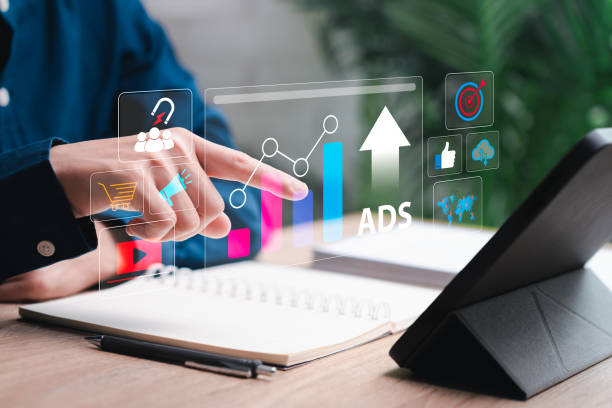
Another crucial aspect of on-page SEO relates to #URL# structure and website #Information Architecture#.
An optimized URL (Uniform Resource Locator) not only helps search engines understand the page’s topic but is also understandable and memorable for users.
An ideal URL should be short, descriptive, include the page’s main keyword, and be free of extra characters or meaningless numbers.
For example, instead of “yoursite.com/page?id=123&cat=456”, a URL like “yoursite.com/comprehensive-on-page-seo” is much better.
Using hyphens (-) to separate words instead of underscores (_) or spaces is recommended.
Information architecture, or the overall site structure, defines how your pages and content are organized and arranged.
A logical and hierarchical information architecture helps search engines crawl and index your pages more efficiently and also allows users to easily navigate your site.
Using a tree-like structure where main pages link to sub-pages and related content is ideal.
For instance, homepage, categories, subcategories, and finally product or article pages.
This structure not only helps improve crawlability but also sends important signals about the relative importance of pages to search engines.
Optimizing the URL structure and site information architecture is a fundamental component of a comprehensive on-page SEO strategy that directly impacts the discoverability and ranking of your pages.
Image Optimization for On-Page SEO
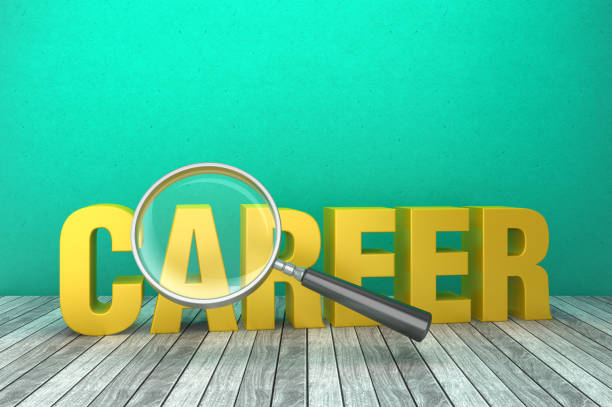
Images play a significant role in a website’s visual appeal and interactivity.
However, if not properly optimized, they can negatively impact site loading speed and consequently your on-page SEO.
Image optimization involves several key steps.
First and foremost, reducing image file size without noticeable quality loss is essential.
Various online tools and software exist for image compression.
Newer formats like WebP can also significantly reduce file size.
Large image sizes not only slow down page loading but can also lead to an increased bounce rate and ultimately a drop in search results rankings.
Next, using alternative text (Alt Text) for images is crucial.
Alt Text provides a brief and accurate description of the image content, which is not only useful for visually impaired users but also helps search engines understand the image content.
This text should include relevant keywords, but keyword stuffing should be avoided.
Image file naming is also important; instead of generic names like “image123.jpg”, use descriptive names like “on-page-seo-image-optimization.jpg”.
These measures not only help improve your images’ ranking in Google Image Search but also generally strengthen your on-page SEO strategy and provide a better user experience.
Site Loading Speed and User Experience

Site loading speed is one of the most important factors in on-page SEO and has increasingly gained importance in search engine ranking algorithms, especially after the introduction of Core Web Vitals by Google.
A slow site not only frustrates users and leads to an increased bounce rate but also directly impacts your ranking in search results.
#Site speed# is a ranking factor for both desktop and mobile versions and significantly affects user experience (UX).
Tools like Google PageSpeed Insights and GTmetrix can help you analyze site speed and identify issues.
Multiple factors influence site loading speed, including image and video sizes, hosting quality, inefficient coding, and excessive use of plugins and scripts.
To improve speed, you can consider actions such as image compression and CSS/JavaScript file minification, using caching, optimizing the database, and choosing a reputable and fast hosting provider.
The ultimate goal is to provide a smooth and fast user experience.
A fast site not only has higher conversion rates but also encourages users to spend more time on your site and view more pages.
These positive interactions send positive signals to search engines, which in turn helps improve your on-page SEO ranking and solidifies your position in the digital market.
| Factor | Impact on Speed | Improvement Solution |
|---|---|---|
| Image Size | Increased loading time | Image compression, WebP format, Lazy Loading. |
| CSS/JS Files | Increased requests and render time | Minify and combine files, remove unnecessary code. |
| Hosting | Server response speed | Choosing quality hosting and fast servers, CDN. |
| Caching | Slower page reloads | Enable browser and server caching for static content storage. |
| Number of Requests | Increased server load | Reduce plugins, optimize fonts and icons. |
| Core Web Vitals | Key user experience metrics | Optimize LCP, FID, CLS to improve visual and interactive experience. |
Internal Linking and Its Importance

Internal linking, or #Internal Linking#, is an important and often overlooked aspect of on-page SEO that significantly impacts your site’s overall performance in search results.
Internal linking means creating links between different pages within a website.
These links not only help users easily navigate your site and discover relevant content but also send important signals to search engines.
By creating strategic internal links, you help search engines better understand your site’s structure, recognize the importance of different pages, and distribute link equity throughout the site.
One of the main benefits of internal linking is improved crawlability.
The more internal links you have, the easier it is for search engines to find and index all the pages on your site.
Furthermore, internal linking using descriptive and relevant #Anchor Text# helps search engines better understand the topic of the destination page.
For example, if you link from an article about “keyword research” to an article about “on-page SEO tools”, using the anchor text “on-page SEO tools” is much more effective than “click here”.
This also helps increase user dwell time on the site (Engagement), as they can easily access relevant information.
A strong internal linking strategy is the backbone of successful on-page SEO and should be continuously considered by adding new content and updating existing content.
Tired of losing customers due to poor e-commerce website design? With RasaWeb, solve this problem forever!
✅ Increase sales and conversion rates from visitors to customers
✅ Smooth and attractive user experience for your customers⚡ Get a free consultation
Advanced On-Page SEO Tips
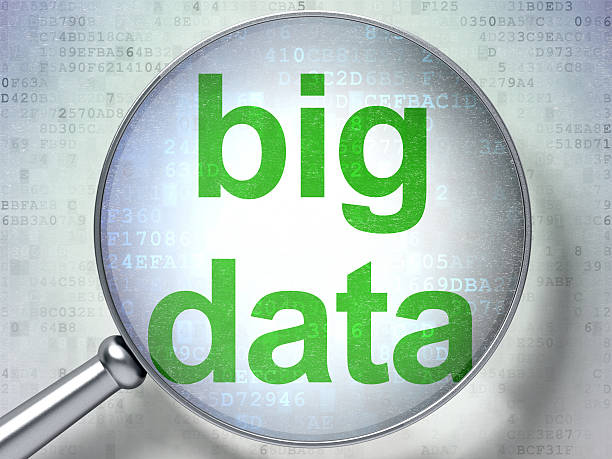
After covering the basics of on-page SEO, it’s time to delve into some more advanced tips that can take your website a step further.
One of the most important of these tips is the use of #Schema Markup# or #Structured Data#.
Schema Markup is code added to your website to help search engines better understand your content and display it in more engaging ways in search results (such as Rich Snippets).
For example, using Schema, you can display information about product ratings, recipes, events, or even your business contact information directly in search results.
This not only helps increase visibility but also boosts your CTR.
Another tip is mobile optimization and attention to #Mobile-First Indexing#.
Google now primarily considers your website’s mobile version for ranking.
Therefore, ensuring site responsiveness, fast loading speed on mobile devices, and a seamless user experience on smartphones is highly important.
Additionally, implementing the HTTPS protocol for site security is a ranking factor, and you should ensure your site uses it.
In the world of SEO, there are always algorithmic changes and updates.
Staying aware of the latest #SEO news# and adapting your on-page SEO strategy to these changes (such as focusing on E-A-T or AI in search) makes you a professional SEO specialist.
With these specialized and up-to-date tips, you can be sure that your website will always remain at the top of search results.
Measuring and Improving On-Page SEO Performance
![]()
Implementing an on-page SEO strategy is just the beginning; the next crucial part is measuring its performance and continuously improving it.
Without precise monitoring, you cannot evaluate the impact of changes made or identify weaknesses.
Tools like Google Analytics and Google Search Console are essential for this purpose.
Google Analytics allows you to track organic traffic, bounce rate, user dwell time on the site, and their navigation paths.
This data provides deep insights into how users interact with your content and can indicate which pages need improvement.
Google Search Console provides vital information on how Google views your site.
Through this tool, you can view reports related to search performance, index coverage, mobile-friendliness issues, and crawl errors.
This data helps you identify and fix technical on-page SEO problems that might prevent your pages from being seen.
For example, if a page is not indexed, Search Console will inform you.
Additionally, specialized SEO tools like Ahrefs and Semrush can help you analyze competitors, monitor keyword rankings, and discover new opportunities.
Continuous monitoring, hypothesis testing, and constant updating of site content and structure based on analytical data is an iterative process that ultimately leads to sustainable ranking improvements and increased organic traffic for your on-page SEO.
This analytical approach ensures that your efforts are always on the right track.
Frequently Asked Questions
| Question | Answer |
|---|---|
| What is On-page SEO? | On-page SEO refers to a set of actions performed within the website and on page content to achieve a better ranking in search results. |
| Why is On-page SEO important for a website? | On-page SEO helps search engines better understand your page’s content and assess its importance. It also provides a better user experience for visitors. |
| What are the most important On-page SEO factors? | The most important factors include keyword optimization, content quality, Title Tag, Meta Description, URL structure, Heading Tags (H1-H6), internal linking, and image optimization. |
| What role does the Title Tag play in On-page SEO? | The Title Tag is one of the most important on-page SEO factors that displays your page’s title in search results and browser tabs. It should include the primary keyword and be engaging. |
| What is the importance of Meta Description in On-page SEO? | The Meta Description provides a summary of the page’s content, and although it does not directly affect ranking, it can increase the click-through rate (CTR) by encouraging users to click. |
| How are keywords used in On-page SEO? | Keywords are phrases that users employ to search for information in search engines. Proper and natural use of them in content helps the search engine identify the page’s topic. |
| What is internal linking and what are its benefits in On-page SEO? | Internal linking means creating links between different pages of a website. This helps distribute page authority, assists search engine robots in crawling, and improves user experience. |
| How does image optimization affect On-page SEO? | Image optimization includes compressing file size, using appropriate Alt tags, and proper file naming. This improves page loading speed and helps search engines understand image content. |
| What does high-quality content mean in On-page SEO? | High-quality content means content that is comprehensive, accurate, unique, up-to-date, and user-friendly, and addresses the needs of users. |
| What role does URL structure play in On-page SEO? | Readable, short URLs that include the main keyword help search engines and users better understand the page’s content and improve the user experience. |
And other services of RasaWeb Advertising Agency in the field of Advertising
Smart Digital Branding: An effective tool for attracting customers with attractive UI design.
Smart SEO: An innovative platform for improving online growth with an SEO-driven content strategy.
Smart Direct Marketing: A novel service for increasing digital branding through key page optimization.
Smart Direct Marketing: A novel service for increasing online growth through marketing automation.
Smart Social Media: An innovative platform for improving SEO ranking by optimizing key pages.
And over hundreds of other services in the field of Internet advertising, advertising consultation, and organizational solutions
Internet Advertising | Advertising Strategy | Advertorial
References
On-Page SEO Guide
The Importance of Internal Linking in SEO
Content Optimization for SEO
What is SEO? Complete Guide
?At RasaWeb Afarin Digital Marketing Agency, we help your business shine brightly in the online world. From secure website design and professional services to comprehensive SEO strategies and targeted content creation, we are your trusted partner on the path to digital growth.
📍 Tehran, Mirdamad Street, next to Bank Markazi, Kazeroon South Alley, Ramin Alley, No. 6

